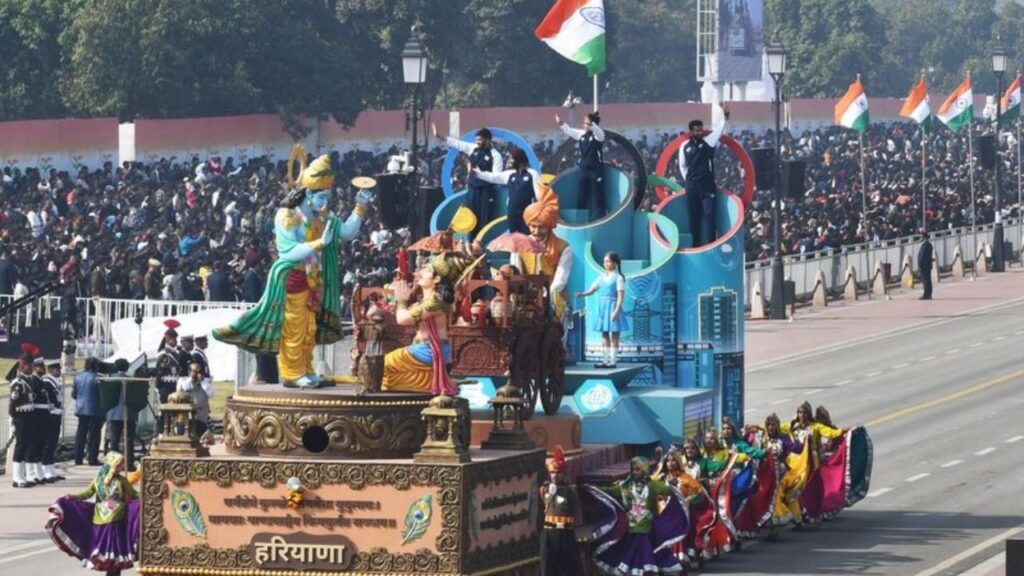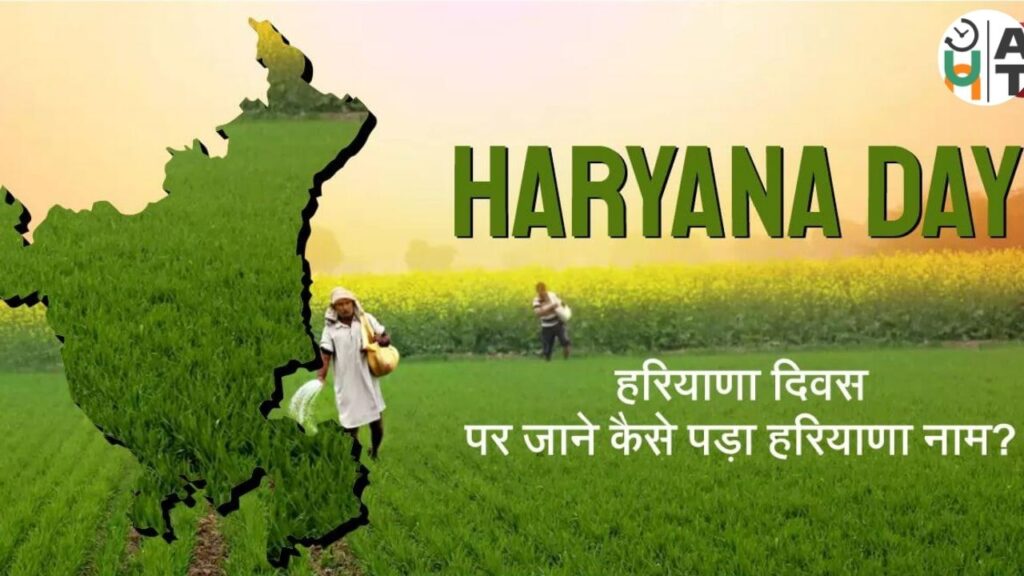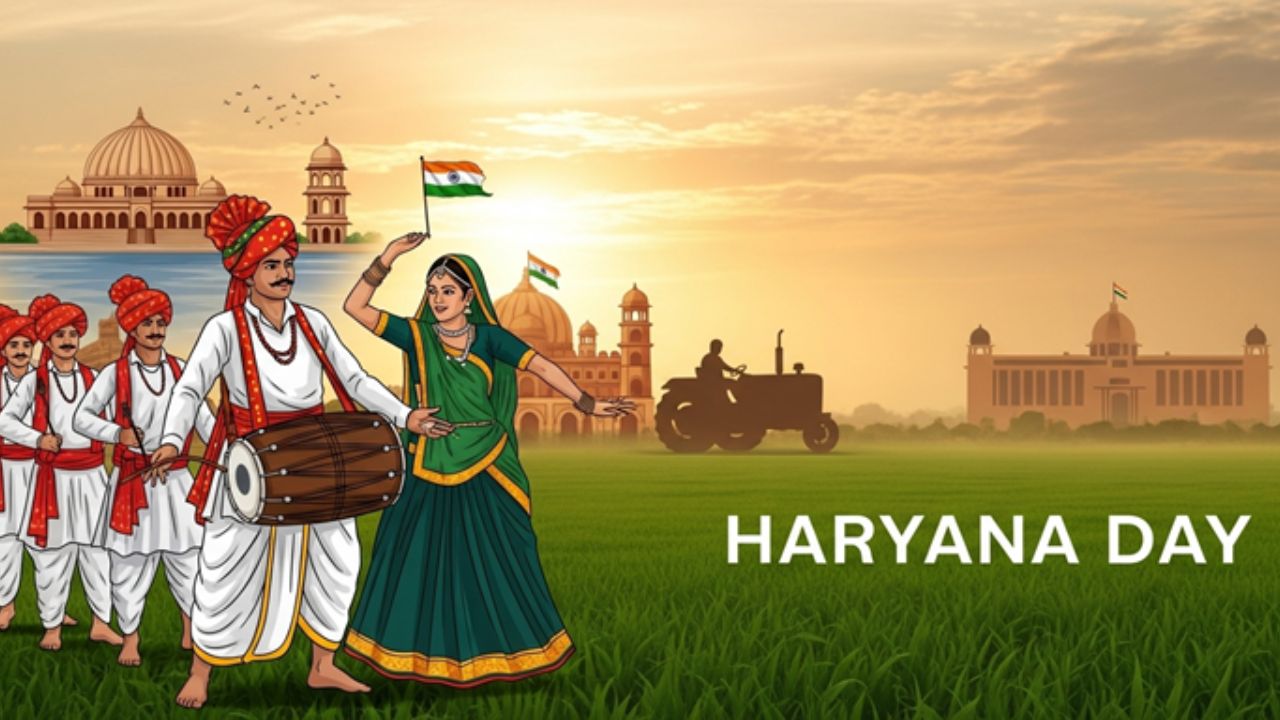Welcome to A Bright Time. So how are you guys? We’ve got you covered today. Breaking News Haryana Day 2025: Welcome to A Bright Time. So how are you guys? We’ve got you covered today. Breaking News Haryana Day 2025: Chandigarh: Every year on November 1, the state of Haryana bursts into a wave of pride, colours, and celebration. Streets are decorated, government buildings are lit up, and cultural programs echo the spirit of the state — celebrating its journey from a humble agricultural land to one of India’s fastest-growing economies.
Known for its fertile plains, valiant soldiers, and world-class athletes, Haryana’s story is one of resilience, reform, and renaissance. But beyond the festivities, Haryana Day serves as a powerful reminder of the state’s ongoing struggle for gender equality and social balance.
Let’s explore everything you need to know about Haryana Day 2025 — from its history and significance to the challenges and triumphs shaping the state today.
Which day is celebrated as Haryana Day?
Haryana Day is celebrated annually on November 1 to commemorate the formation of the state in 1966. On this day, Haryana was carved out of the larger Punjab state following the Punjab Reorganisation Act, 1966, passed by the Indian Parliament.
The day marks the moment when Haryana began its own independent journey — building its governance, economy, and identity. It’s celebrated across all 22 districts and six administrative divisions with parades, cultural programs, and government events.
The capital city Chandigarh, which also serves as a shared capital with Punjab, hosts the main celebration at the Haryana Raj Bhavan and Panchkula, where government officials honour the contributions of freedom fighters, farmers, and social reformers.

Is 1st November a holiday in Haryana?
Yes, November 1 is officially observed as a public holiday in Haryana. All government offices, educational institutions, and banks remain closed to mark the foundation day.
Cultural festivals, folk dance performances, and public gatherings are held across the state. Citizens participate in flag-hoisting ceremonies and special programmes organized by the Haryana Tourism Department and the Department of Information, Public Relations, and Languages.
Private organizations may or may not declare the day as a holiday, but for most Haryanvis, the day is about celebrating the pride and achievements of their home state.
When was Haryana born?
Haryana came into existence on November 1, 1966, when the Punjab Reorganisation Act was implemented. The act divided Punjab into two separate entities — Haryana and Punjab — primarily based on linguistic lines.
Haryana was formed to give a distinct identity to the Hindi-speaking population of the region. The move was both political and cultural, aimed at ensuring better administration and recognition of Haryana’s unique heritage.
Today, Haryana borders Punjab, Himachal Pradesh, Rajasthan, Uttar Pradesh, and the National Capital Territory of Delhi, playing a crucial role in North India’s economy.
The state’s proximity to Delhi has helped it become a hub of industrial development, with 32 Special Economic Zones (SEZs), most of which are located in the National Capital Region (NCR) — including Gurugram, Faridabad, and Sonipat.
Is Haryana Day a government holiday?
Indeed, Haryana Day is a gazetted government holiday across the state. Officially recognized by the Government of Haryana, the day sees massive participation from state departments, schools, and the armed forces.
The holiday not only celebrates the creation of the state but also honours the relentless spirit of its people — farmers, soldiers, and athletes — who have brought Haryana national and international glory.
Several award ceremonies are held to recognize individuals who have made significant contributions to fields like agriculture, sports, women empowerment, and education.
What is Haryana’s old name?
Before becoming a separate state, the region that is now Haryana was a part of undivided Punjab. Historically, the area was known by various names such as Brahmavarta, Kurukshetra, and Harit Desh, mentioned in ancient texts like the Mahabharata and Rigveda.
The modern name Haryana is derived from two Sanskrit words — Hari (meaning God) and Ayana (meaning abode). Thus, Haryana translates to “The Abode of God.”
This historical significance gives the state a spiritual and cultural richness that continues to be celebrated through festivals, pilgrimages, and art forms like Ragini and Phulkari.
Why is 23 September a holiday in Haryana?
September 23 is also observed as a state holiday in Haryana to commemorate the birth anniversary of Devi Lal, the former Deputy Prime Minister of India and a revered political leader from the state.
Known as “Tau Devi Lal,” he was a champion of farmers’ rights and rural welfare. His contributions to the development of Haryana — particularly in agriculture and social welfare — earned him immense respect among the masses.
On this day, political leaders and citizens pay tribute to his memory through public gatherings and welfare programs, reflecting on his vision for a prosperous Haryana.
The Changing Face of Haryana: From Fields to Factories
Since its creation, Haryana has transformed from a purely agricultural state to an industrial and technological powerhouse.
The region, once known for its vast wheat and rice fields, is now home to India’s corporate and manufacturing hubs, especially in Gurugram and Faridabad. These cities have attracted global companies, contributing significantly to India’s GDP.
However, the soul of Haryana still lies in its villages — in its farmers, festivals, and folk traditions that continue to define its identity.
Haryana’s Social Challenge: The Gender Imbalance
Despite economic progress, Haryana has long struggled with a low female sex ratio, an issue that has drawn nationwide concern.
In 1966, the year of its formation, Haryana’s sex ratio was 877 females per 1,000 males. Decades later, the situation, though improved, still lags behind the national average.
As per 2024 data, the sex ratio in Haryana stands at 910 females per 1,000 males, below the national average of 940. In previous years, it was 916 (2023), 917 (2022), 914 (2021), and 922 (2020).

How Haryana is Tackling This Challenge
The state government has taken multiple initiatives to address the gender gap and social inequality.
1. Strict Law Enforcement
Under the Pre-Conception and Pre-Natal Diagnostic Techniques (PCPNDT) Act, Haryana has taken tough measures against illegal ultrasound centres involved in sex determination. Raids, arrests, and awareness drives have helped reduce female foeticide.
2. Public Awareness Campaigns
Programs like “Beti Bachao, Beti Padhao” — launched in 2015 — have played a pivotal role in changing mindsets. Haryana’s women athletes such as Sakshi Malik and the Phogat sisters have become icons of empowerment, inspiring millions.
3. Financial Incentives
Schemes like “Aapki Beti, Hamari Beti” and Sukanya Samriddhi Yojana encourage families to support girl education and financial independence. For example, the Haryana government provides a ₹21,000 grant invested with LIC for the first girl child in Scheduled Caste (SC) or Below Poverty Line (BPL) families.
Haryana’s Future: A State of Hope and Progress
Haryana has come a long way since 1966 — from the days of agricultural dependence to becoming a leader in sports, infrastructure, and industry.
Yet, challenges remain — particularly in improving the female literacy rate, which currently stands at 65.94%, and continuing the fight against social biases.
As Haryana celebrates its 59th Foundation Day in 2025, the spirit of “Jai Jawan, Jai Kisan, Jai Beti” echoes across its fields and cities.
From the green pastures of Hisar to the glass towers of Gurugram, the message is clear — Haryana is not just a state, it’s a story of transformation.







